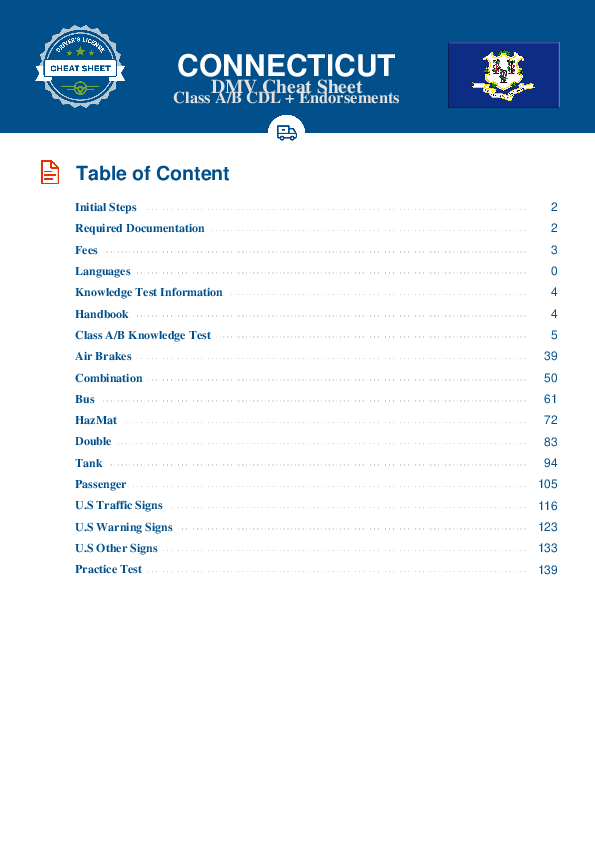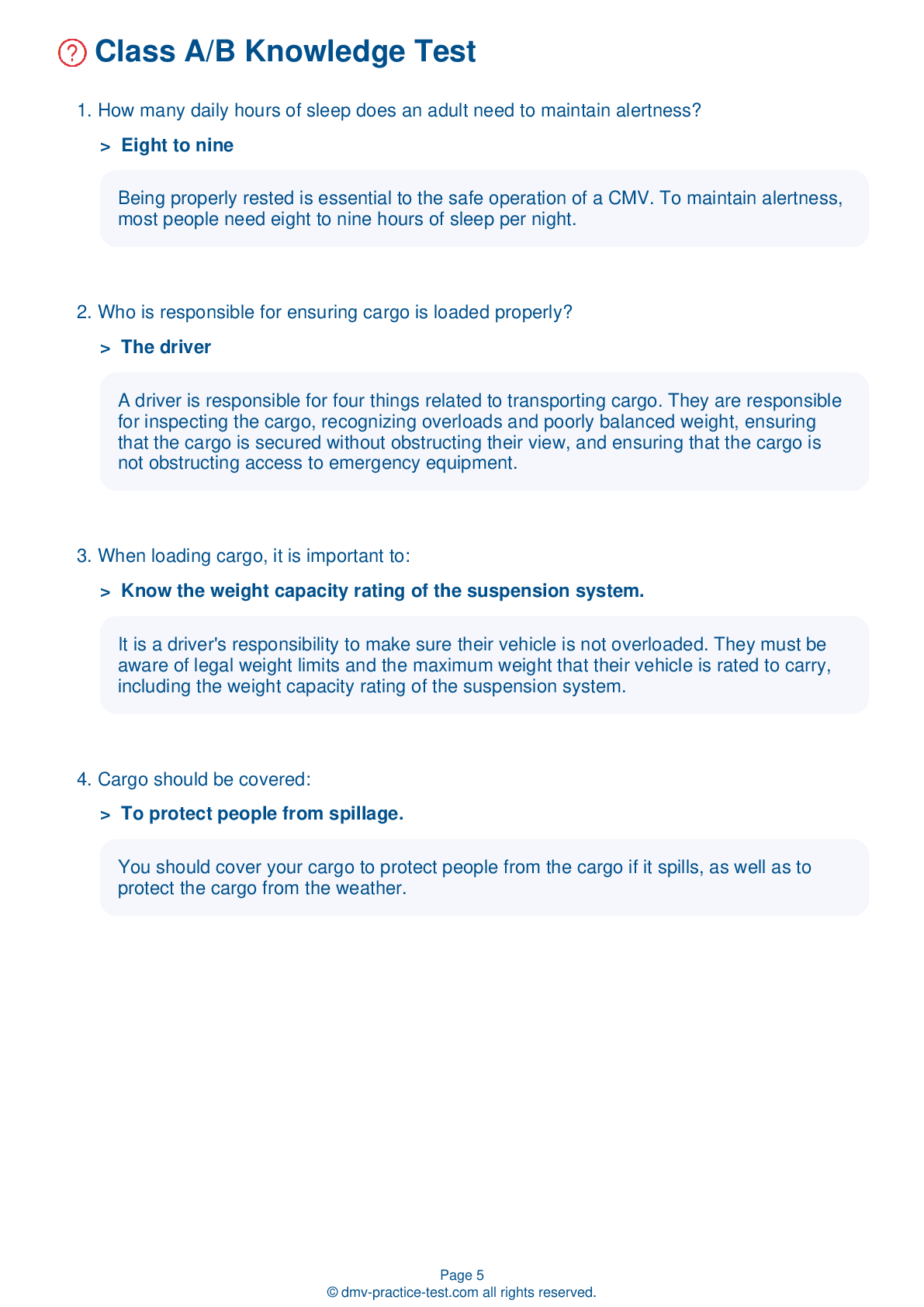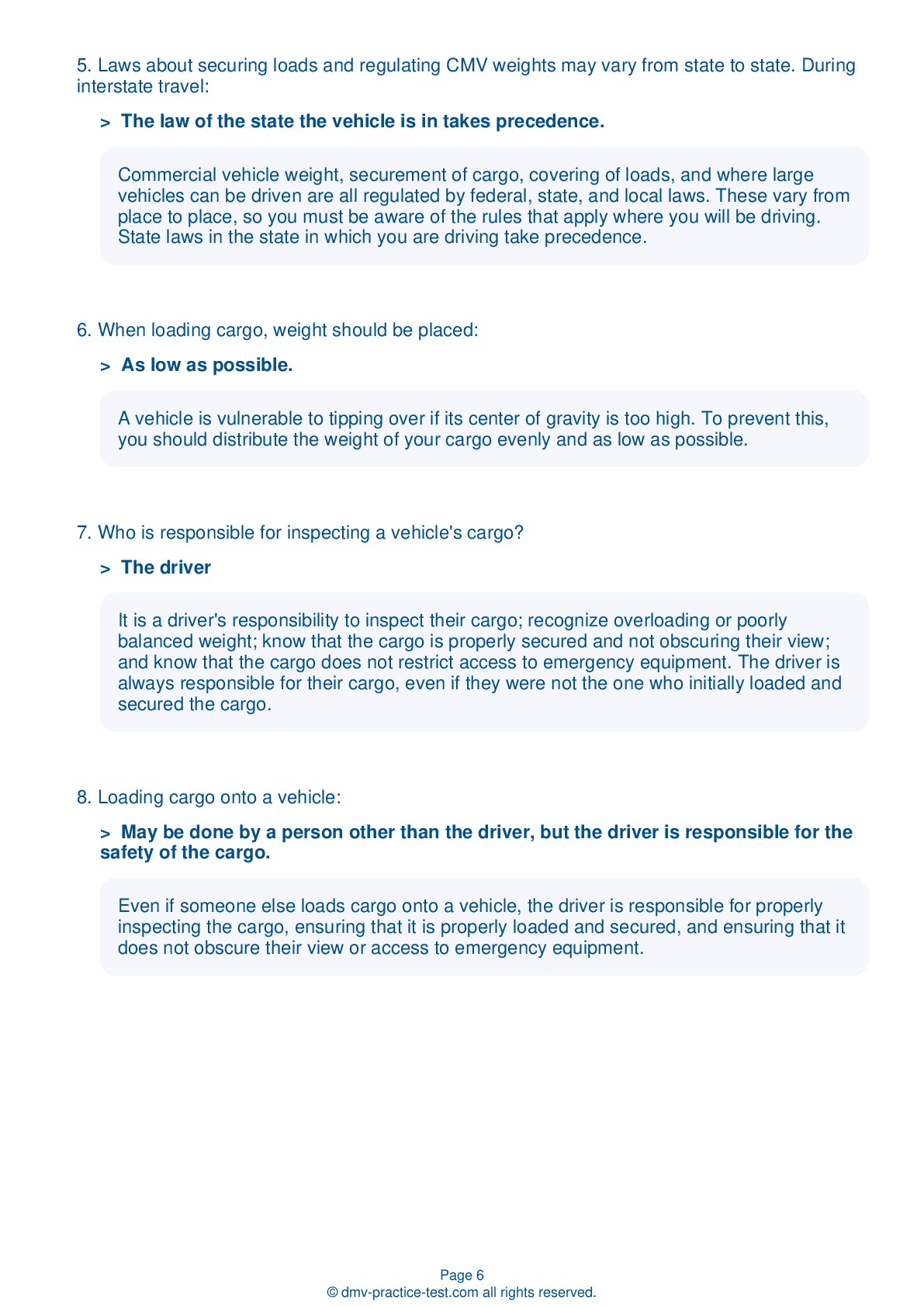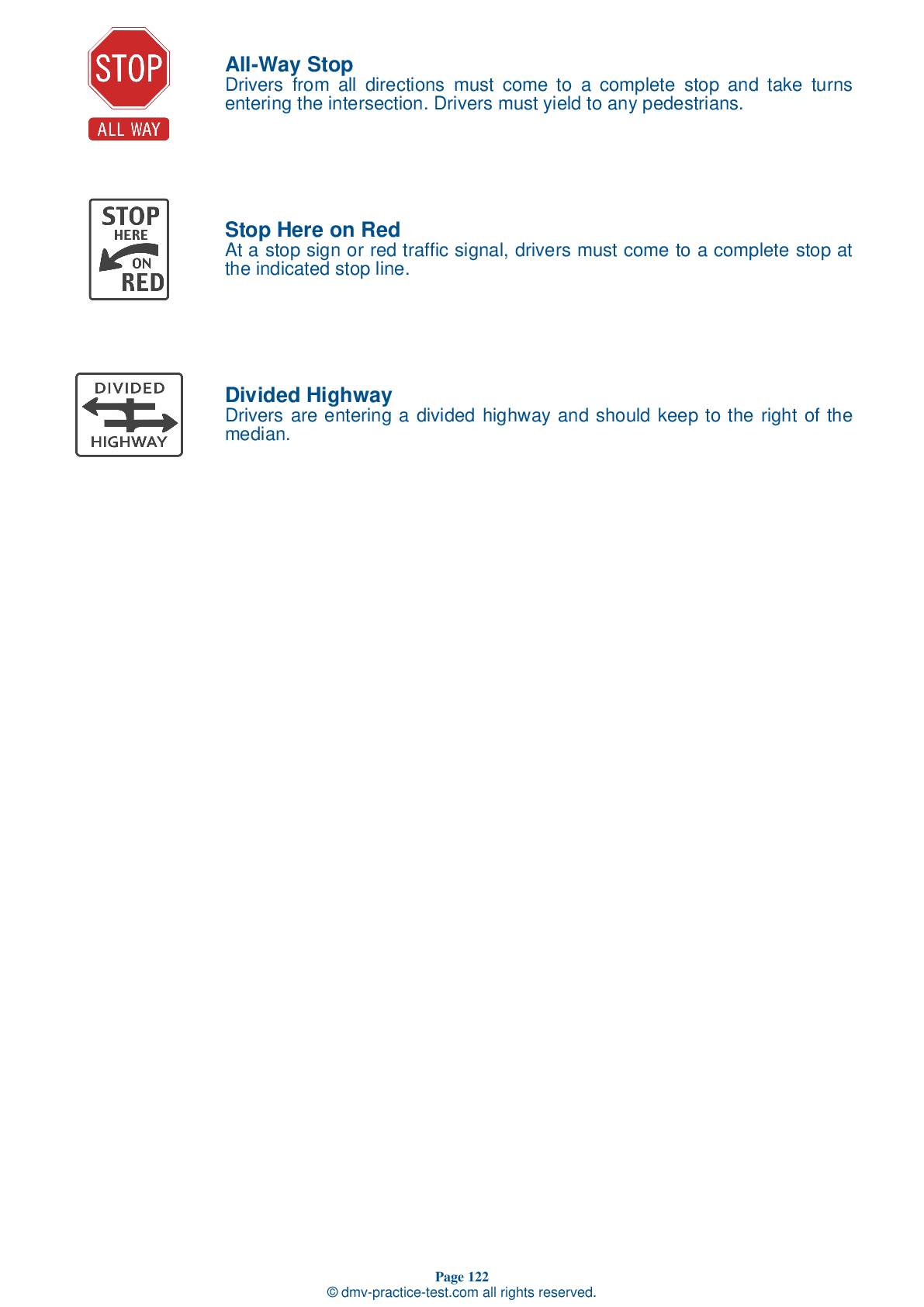Knowledge Test Class A #1
Class A Driving Test | Connecticut 2026 #1 Page 4 of 7
Train for FREE online with our Connecticut class A license test. The official exam test consists of several obligatory parts, with all of them checking your knowledge of different blocks of road rules. If you need to obtain a CT CDL class A permit in 2026, practice as much as possible. Free sample tests published on our website will help you check and improve your knowledge and boost your grades. Please bear in mind that CDL class A requirements may vary from state to state.
50
40
20
22 . If feeling tired and frequently yawning, you should:
Pull over and take a nap.
Frequent yawning is a warning sign of fatigue. If you become tired while driving, the only safe response is to stop and get some sleep. You cannot rely on artificial stimulants, like caffeine, to keep you alert because they will eventually wear off and leave you more tired than you originally were.
23 . In the event of an engine fire, you should not:
Spray from the underside of the vehicle.
In the event of an engine fire, you should turn off the engine as soon as possible. Do not open the hood if you can avoid it. Shoot foam through the louvers or from the vehicle’s underside.
24 . About how many drinks does it take for a 200-pound person to reach a 0.02 percent blood alcohol concentration (BAC)?
Four
Alcohol impairment begins long before the legal limit is reached. A 200-pound person will reach a blood alcohol concentration (BAC) of 0.02 percent after a single drink.
25 . What is the purpose of a vehicle inspection report?
It provides a plan for the next five trips.
A vehicle inspection report allows a driver to inform the motor carrier of issues that could affect the safe operation of a vehicle. If required, the driver should fill out a vehicle inspection report after every day of driving. They should make note of any issues that could affect the safety of the vehicle or that could lead to a mechanical breakdown.
26 . Parked delivery trucks may be hazardous because:
Passing parked delivery or postal trucks can be dangerous because the driver may be in a hurry and pull into traffic without warning, or may they suddenly step out of the vehicle without checking for other traffic.
27 . Emergency equipment, such as fire extinguishers, are:
All commercial motor vehicles must carry appropriate emergency equipment, including fire extinguishers.
28 . If another driver is following you too closely, you should do all of the following, except:
Avoid relying on tricks to help others pass.
If you are being followed too closely, you should increase your following distance, avoid making quick moves, and avoid relying on tricks (such as flashing your lights) to help other drivers pass. Speeding up may only increase the danger by causing the tailgater to continue tailgating you at a higher speed.
2026 Connecticut | Frequently Asked Questions
A CDL Class A license in Connecticut allows the holder to operate any combination of vehicles with a Gross Combination Weight Rating (GCWR) of 26,001 pounds or more, provided the Gross Vehicle Weight Rating (GVWR) of the vehicle being towed is over 10,000 pounds. This typically includes tractor-trailers and truck and trailer combinations.
A Class A CDL license in Connecticut allows the holder to operate vehicles such as tractor-trailers, truck and trailer combinations, tank vehicles, livestock carriers, and flatbeds. The license is for any combination of vehicles with a Gross Combination Weight Rating (GCWR) over 26,001 pounds, if the towed vehicle exceeds 10,000 pounds GVWR.
To obtain a Class A CDL license in Connecticut, you must be at least 21 years old, possess a valid Connecticut driver's license, pass a vision test, and complete a commercial driver's license knowledge test. You must also pass a pre-trip vehicle inspection test and a skills test, which includes off-road maneuvers and on-road driving. Additionally, you must provide a medical examiner's certificate.
In Connecticut, you must be at least 21 years old to qualify for a Class A CDL license if you intend to drive across state lines (interstate). However, if you plan to drive only within Connecticut (intrastate), you can obtain a Class A CDL license at the age of 18.
Specific endorsements are not required for a Class A CDL license, but they can grant additional privileges. Endorsements include T for Double/Triple Trailers, P for Passenger Vehicles, N for Tank Vehicles, H for Hazardous Materials, and S for School Buses. Each endorsement requires passing a separate knowledge test and sometimes a skills test.
The Class A CDL skills test in Connecticut encompasses three main sections: a pre-trip vehicle inspection, a basic vehicle control test, and an on-road driving test. This assessment is designed to evaluate your ability to safely operate a Class A commercial vehicle, including checking for safety defects, maneuvering the vehicle in various situations, and driving in normal traffic conditions.
Yes, Class A CDL license holders may face limitations based on factors like the driver's medical condition, the type of vehicle driven, and the presence of certain endorsements. For example, drivers might be restricted to operating automatic transmission vehicles, or prohibited from driving tank or passenger vehicles without the appropriate endorsements. Also, all CDL holders must abide by federal hours-of-service regulations.
Yes, in Connecticut, the written Class A CDL test is available in multiple languages besides English. However, federal regulations require that all CDL holders understand English sufficiently to converse with the general public, understand highway traffic signs and signals, and respond to official inquiries and instructions.
Yes, you can request accommodations for the Class A CDL written test if you have a disability. The Connecticut DMV complies with the Americans with Disabilities Act (ADA) and provides reasonable accommodations like sign language interpreters, extra time, or tests in alternative formats. You should contact the DMV directly to arrange these accommodations prior to your test date.
If you fail the Class A CDL written test in Connecticut, you are allowed to retake it. However, you must wait a minimum of seven days before your next attempt. There is also a retest fee that applies each time you retake the test. It's recommended to study the CDL manual thoroughly before your next attempt.



